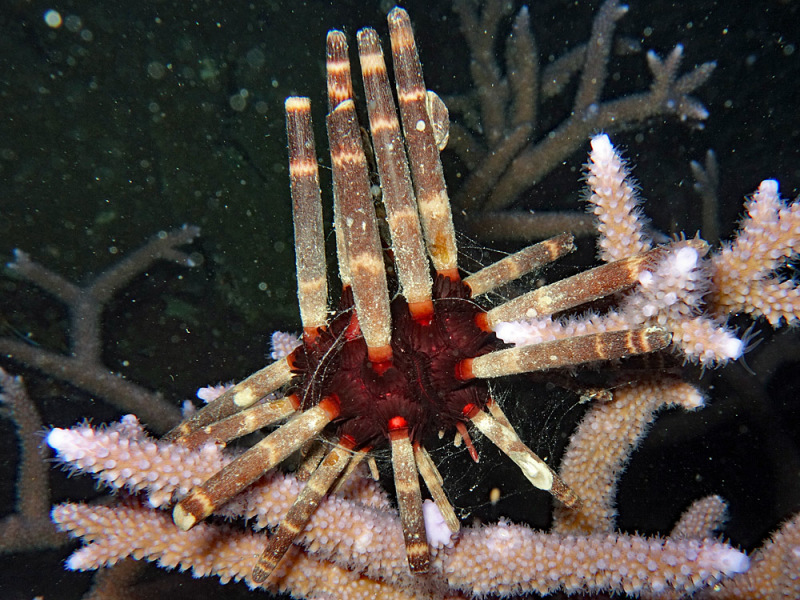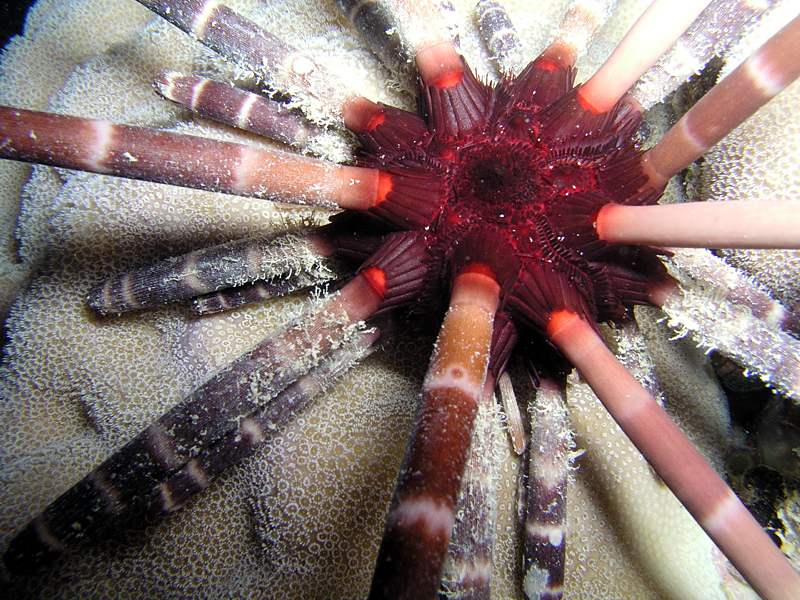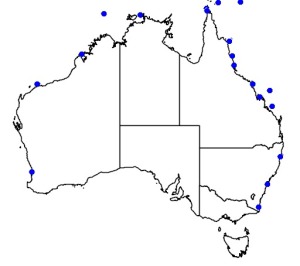
©Lyle Vail and Anne Hoggett: Phyllacanthus imperialis spawning at night on 21 November 2005, off the Research Station. The spawn appears sticky, clinging to the test and spines. We have no idea what the pink protuberance is at front right.
Colours
Distinguishing features
Cidarids are commonly called pencil urchins for their thick spines. There are only three cidarid species known from the Lizard Island area and they are easily distinguishable. Phyllacanthus imperialis is the most common. It is a large urchin with the test (central body) about 50 to 80 mm in diameter. The spines are smooth and more or less circular in cross section.
Another large urchin with thick spines is also found at Lizard Island: Heterocentrotus mammillatus (family Echinometridae). In contrast to the cidarids, its spines are either triangular in cross-section or rounded and flattened near the tip.
Size
- Size data has not been obtained.
Depth range
- Depth range data is not yet available.
Synonyms
Distribution
Distribution and habitat preferences
Phyllacanthus imperialis is hidden deep within the reef during the day, when it is virtually never seen. It emerges at night and is a common and conspicuous member of the nocturnal reef fauna.
Behaviour
Phyllacanthus imperials can often be seen spawning at the same time as corals during mass coral spawning events.
Web resources
References
- Olson, R.R., J.L. Cameron and C.M. Young (1993). Larval development (with observations on spawning) of the pencil urchin Phyllacanthus imperialis: a new intermediate larval form? Biological Bulletin, 185: 77-85. LIRS catalog number 744.
- Young, M.A.L. and D.R. Bellwood (2011). Diel patterns in sea urchin activity and predation on sea urchins on the Great Barrier Reef. Coral Reefs, 30: 729-736. LIRS catalog number 1483.



